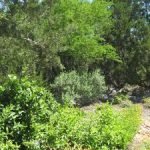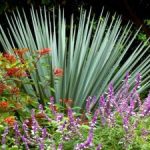The common practice when building homes in the Hill Country or brush country is to simply remove existing vegetation and plant replacements that are more suited to Houston, Anaheim and Virginia. Nothing against those fine places, but this is South Central Texas, where the weather tends to lay waste to fanciful garden notions. We should embrace our native plants if not for simple cost, then for survivability, maintenance and drought tolerance.
In the Hill Country north of town, limited soil and limestone rocks are the rule. In brush country to the west and south, soils range from 8 inches to 20 feet in depth and could range from acidic to alkaline in pH.
Nature has provided plants that tolerate heat, cold, drought and floods. They cost less to maintain — no watering, fertilizing or pruning necessary. Besides low maintenance, these plants encourage native birds and butterflies to stay in your landscape.
Here are fourteen plants we need to preserve on every new home build site. Not every plant will be there, but over the entire region, these seven will be found.
| Hill Country | ||
|---|---|---|
 |
 |
 |
| Texas Mountain Laurel (Sophora secundiflora) |
Texas persimmon (Diospyrus texana) |
Sotol (Dasylirion leiophyllum) |
 |
 |
 |
| Evergreen sumac (Rhus virens) |
Twist-leaf yucca (Yucca rupicola) |
Agarita (Mahonia trifoliolata) |
 |
||
| Ashe juniper (Juniperus ashei) |
||
Find a way to save our native vegetation. It will save you time, money and our native ecosystem.










